Moving from traditional front-facing classrooms to modern active-learning learning spaces is easier said than done. Active learning has been a growing trend in education for decades due to its impact on student learning and success. But it is much more challenging than a simple approach of “If you build it, they will come.”
According to a recent study on the factors that lead to successful growth of active learning spaces in schools, colleges, and universities, it requires a balance of factors that work together to sustain this investment. This is a story of how Oregon Tech utilized these organizational factors to build a state-of-the art building and innovative learning spaces that support long-term success of their educational mission.
Oregon Institute of Technology (Oregon Tech) began the conception process for a new 40-million-dollar Center for Excellence in Engineering and Technology (CEET) in 2017. During that time there was little thought given to interiors, but rather a general vision of a space to support students, faculty, researchers, and industry partners.
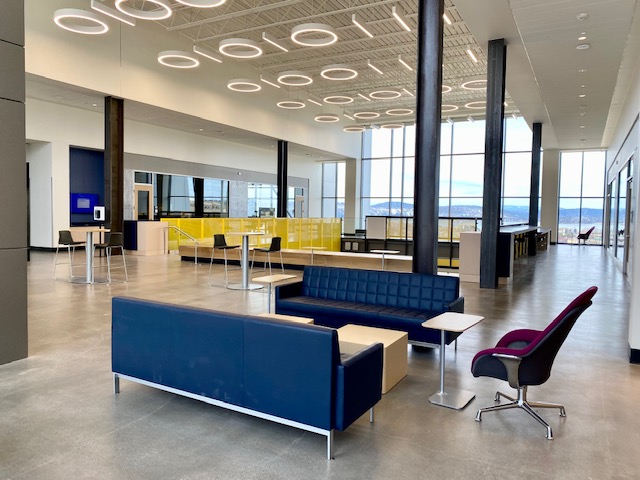
As the construction began, faculty reached out to university leadership to point out they had a great opportunity with CEET. At the time, the campus had mostly front-facing traditional classrooms, yet their internal research showed that both faculty and students were seeking more innovative active learning classrooms and labs. At the same time, one of the Oregon Tech faculty had completed a large-scale study with Steelcase Learning that uncovered 11 factors that lead to successful scaling of active learning spaces, including team and institutional support, knowledge and training, growth practices and ties to student success. (For details of the study see The Journal of Learning Spaces.) Knowing it would take more than picking out a bit of furniture, a mistake made on prior projects, Oregon Tech moved forward to design the interiors with a more intentional approach.
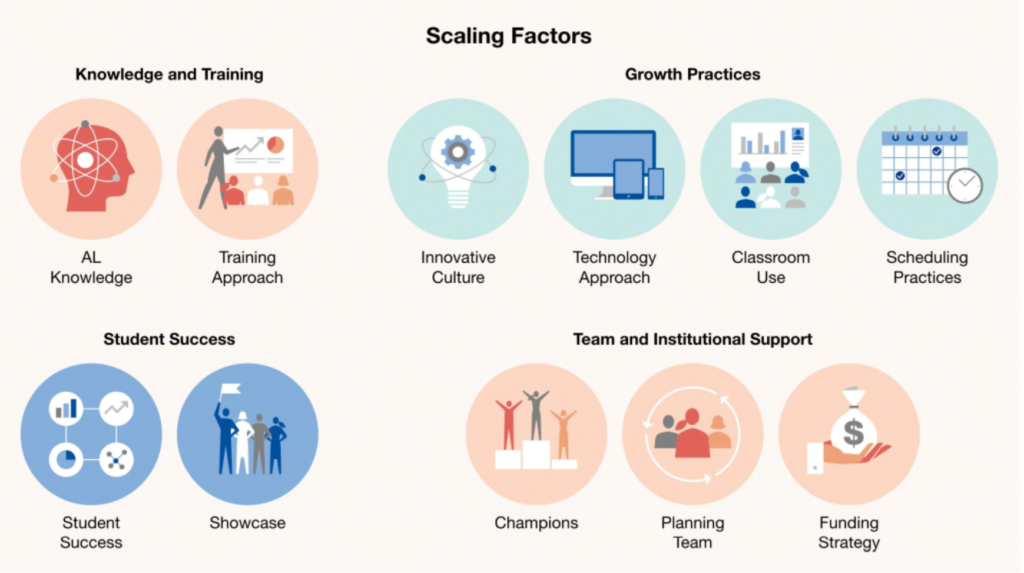
Key Approach #1: Team & Institutional Support
The study’s research showed that a multi-perspective approach was key in terms of the project team and champions. The first step for Oregon Tech was to put together a small multidisciplinary team of internal and external stakeholders to work together to share research, knowledge, expertise, and perspectives. Before furniture was even considered, this group started with the question — how will this space be used and how will it support learning? This team was able to use their collective knowledge regarding the needs of Oregon Tech’s students and faculty as well as research about learning spaces. “Our team of designers, educators, students, facilities personnel, furniture vendors, and architects used research about active learning environments as our foundation to furniture planning at the CEET,” says Susan Hargrave, Project Manager, TVA Architects. “Understanding the needs of teachers and learners was key to creating a functional, adaptable, and dynamic solution.”
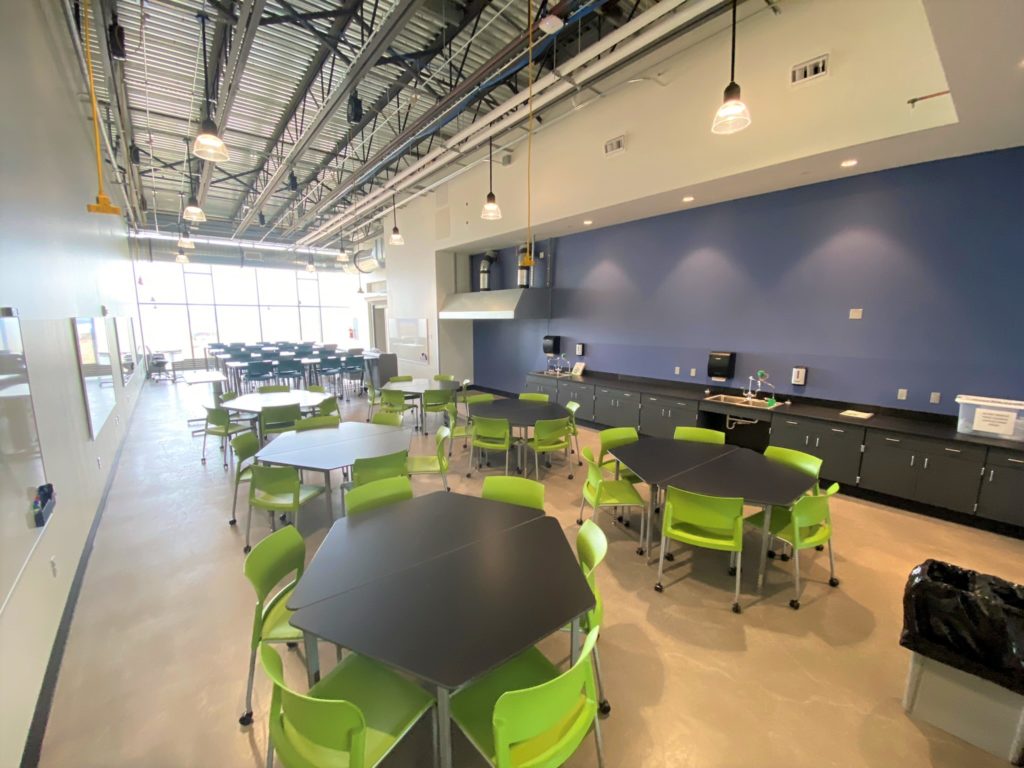
As this team progressed, it was key that a member of leadership help to champion the work and connect the project with university priorities, initiatives, and overall university mission. This support proved critical in so many ways. “Working with the team, I gained a deeper knowledge about how these spaces would support learning — specifically hand-on learning, which is at the center of our mission and strategic plan,” says Tom Keyser, Ph.D., Dean, College of Engineering, Technology and Management. “Communicating this connection to the rest of the leadership team, including the VP of Finance and academic leaders, helped to continue ongoing support for the project – including financial backing.”
Key Approach #2: Knowledge and Training
The team was also aware that the development and support of Oregon Tech faculty to use and thrive in these new, innovative, active learning spaces would be critical. “The benefits of active learning has been well documented over the years,” says Dave Bublitz, Regional Education Leader at Steelcase Learning. “However, the process for achieving those results may not be that well understood. Active learning takes a combination of tools and instructional strategies when combined to give the instructor the opportunity to succeed.”
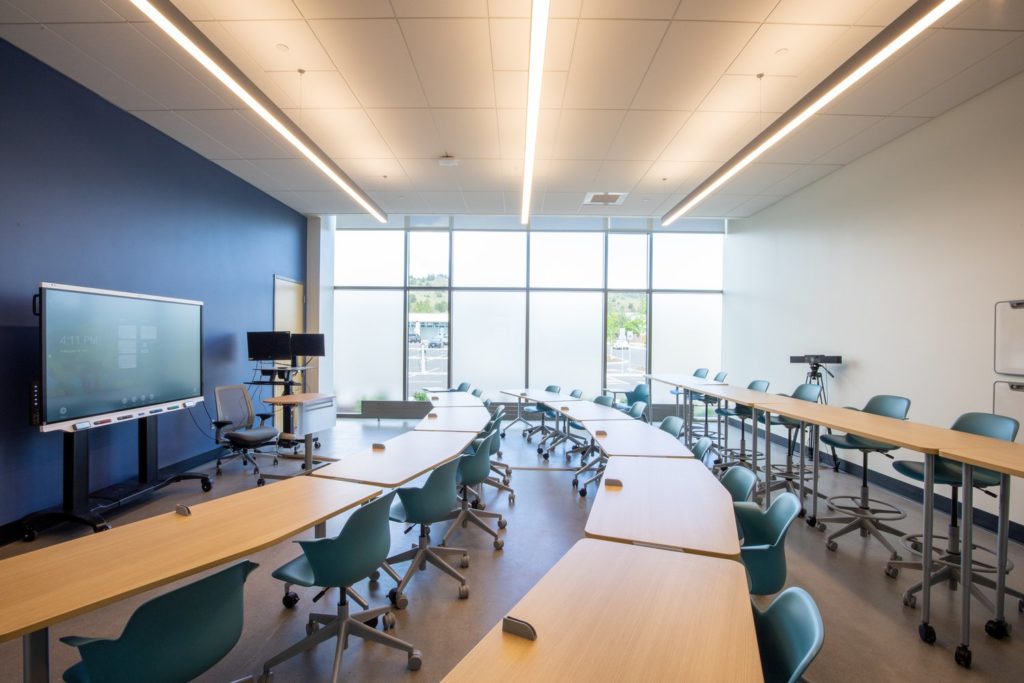
Oregon Tech started a process of developing a group of faculty in active learning after they received an Active Learning Classroom grant from Steelcase in 2017. As Bublitz explains, Oregon Tech’s development of faculty evolved over time. “We started by helping the school develop active learning goals for the institution that connected to their mission and values. Once the new furnishings and technology arrived, an active learning workshop was conducted with the instructors teaching in the classroom. We make sure that they understood how their new classroom could be easily reconfigured to support the learning activities from lecture to group activities and discussion. Fortunately, at Oregon Tech both parts of this process were embraced, and their first active learning classroom yielded the results they were anticipating which grew interest among both faculty and students. Without that foundation and success, I don’t believe you’d see the innovation that occurred with the design of their new CEET facility.” Following the completion of CEET, this education continued to help support and develop more faculty.
Our team of designers, educators, students, facilities personnel, furniture vendors, and architects used research about active learning environments as our foundation to furniture planning at the CEET.
Susan Hargrave, Project Manager, TVA Architects
Key Approach #3: Growth Practices
The study found there are a variety of practices that support successful growth of active learning classrooms. One key is to cultivate an innovative environment, particularly in teaching. Faculty must have the freedom to try new approaches without fear or retribution. Oregon Tech has a highly innovative environment which support their faculty and students in exploration and innovation. The team therefore incorporated an assortment of flexible teaching spaces which allowed faculty to practice and experiment. The team developed a visual guide for the building that described each space along with details regarding technology, size, and how best to use the space pedologically. They then partnered with the registrar in the scheduling process to connect instructor practices to the most appropriate space.
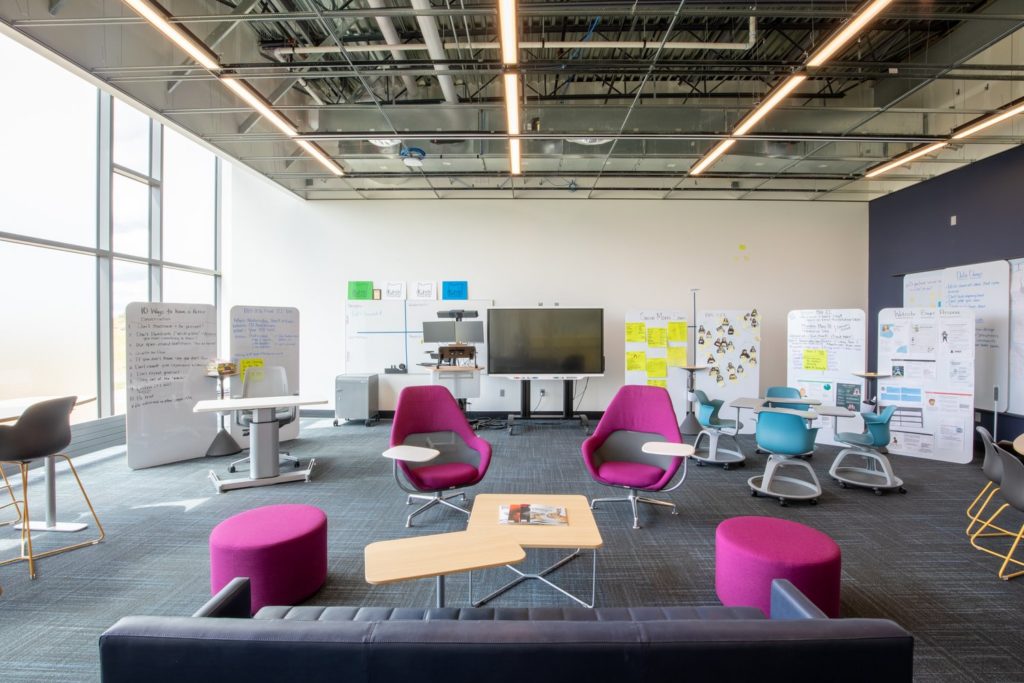
Key Approach #4: Student Success
Finally, the research found that it is important to connect the investment of new classrooms to student success initiatives. In other words, classrooms are not just getting new furniture, rather the spaces are intentionally designed to support greater student success. At Oregon Tech, the mission and strategic plan focus heavily on innovative hands-on learning with strong connections to industry, while also striving to support students holistically in safe and inclusive environments. Therefore, the team continuously made connections regarding how these spaces would support the mission and student success. “The Center for Excellence in Engineering and Technology (CEET) at Oregon Tech is an example of an innovative learner-focused environment demonstrating how space and design together influence the learning outcomes. As Oregon Tech’s newest construction, CEET is 70,000 square feet of active learning classrooms and laboratories for students to learn, collaborate, and experiment while immersed in a forward-thinking and entrepreneurial culture,” says Nagi Naganathan Ph.D., President, Oregon Tech.
Putting these approaches together has been an overwhelming success for Oregon Tech. It’s very inspiring to walk through the building and hear students talk about how collaborative and innovative the spaces are. They feel comfortable here and enjoy spending time here. They don’t just come to class and leave, but rather they come to class and stay. We hear this over and over again!”
Project Team: Hyphn, Steelcase Learning, TVA Architects, and Oregon Tech faculty and staff.
To learn more on this topic, attend “The Secrets to Successfully Scaling Active Learning Spaces” Thursday, November 3 at 2:00 PM at EDspaces 2022.

